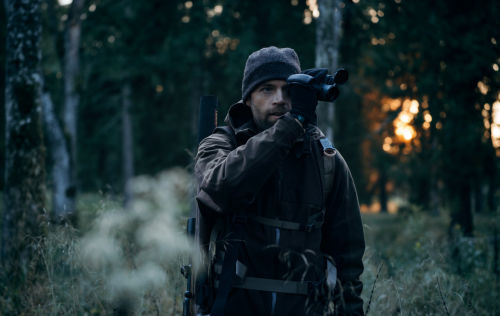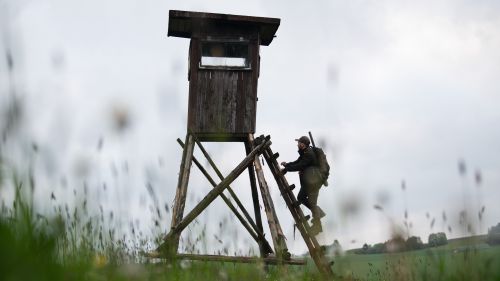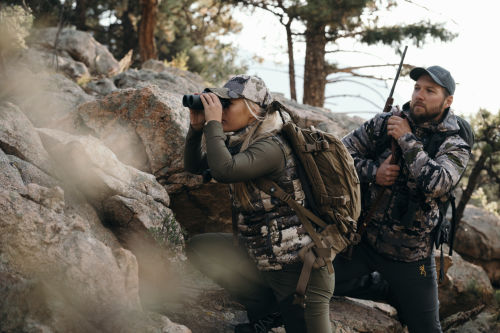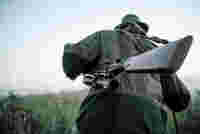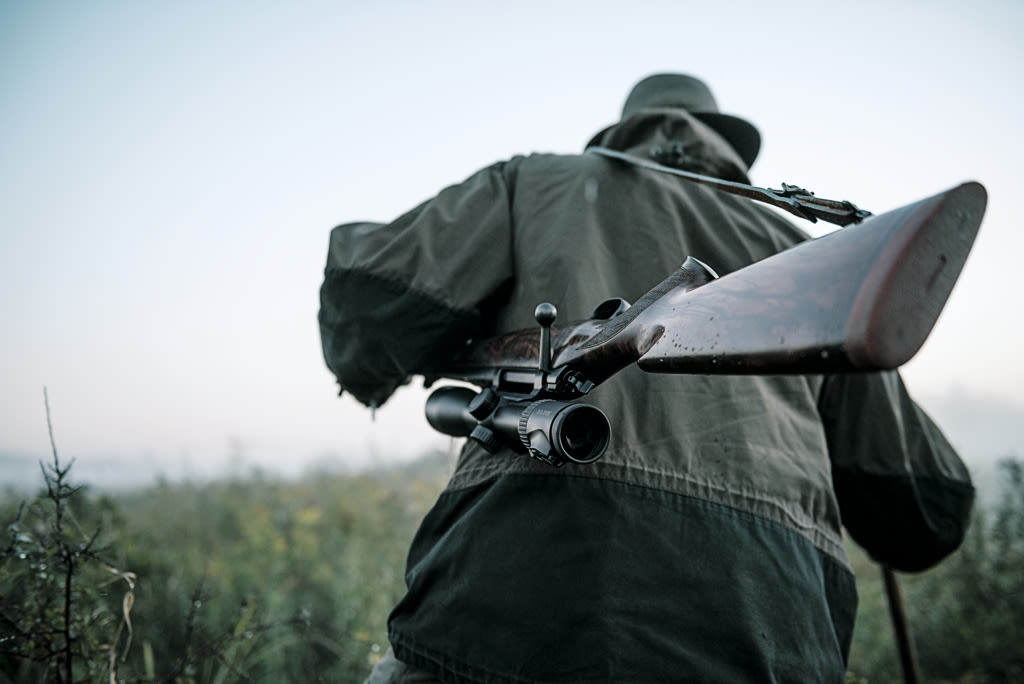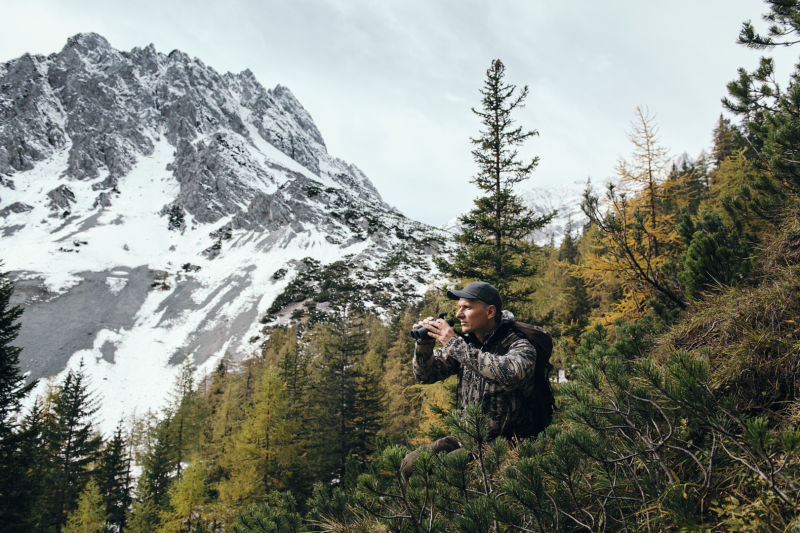Rifle scopes are now an integral part of modern hunting. The reticle built into the rifle scope replaces the back and front sights and, together with the magnification, enables a controlled shot. Find out more about the numbers and values used in rifle scope specifications.
MAGNIFICATION AND FIELD OF VIEW
Magnification is an important dimension for rifle scopes and indicates how many times closer an object appears to be. The higher the magnification, the closer the object appears and the smaller the field of view.
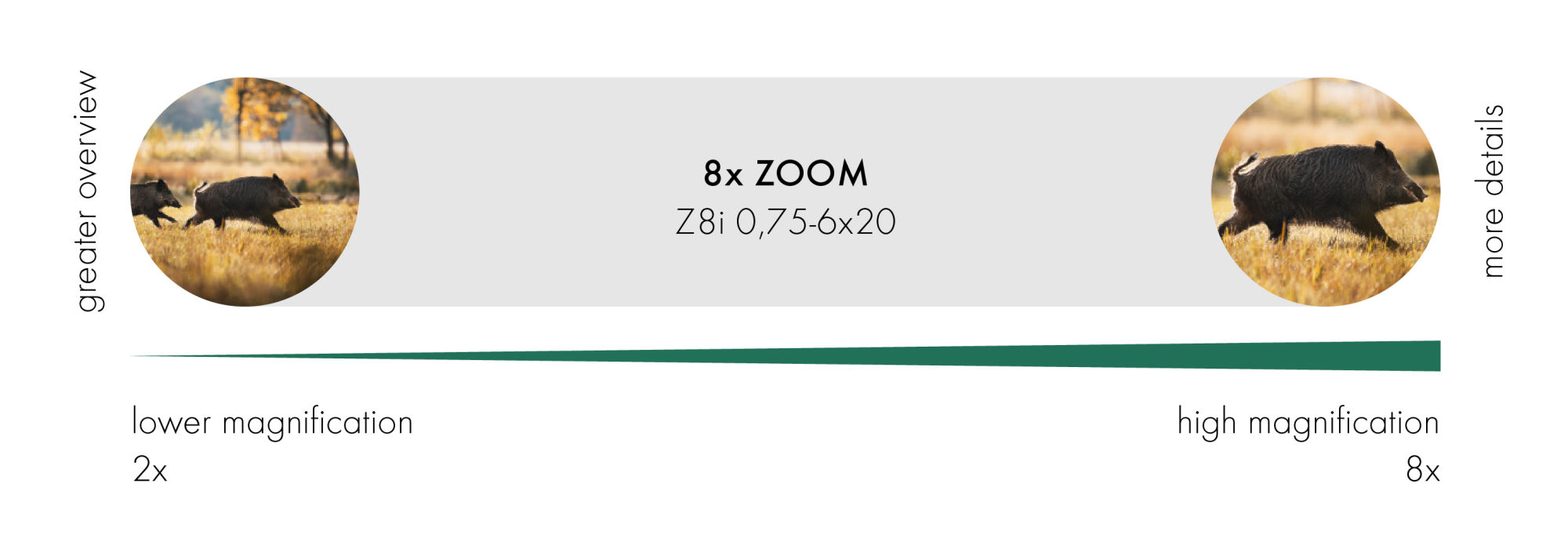
IMAGE PLANES
The design principle used in rifle scopes (use of lenses as a reversal system) results in two image planes.
Behind the objective lens, the image appears upside down and laterally transposed at the 1st image plane (objective lens image plane). This is then magnified by the reversal system and displayed as an upright image at the 2nd image plane. The eyepiece takes this image and projects it, like a magnifying glass, onto the eye.
Nowadays, most rifle scopes are used with the reticle at the 2nd image plane. If you increase the magnification, the reticle remains the same size. The size of the image changes, but not the size of the reticle. Even at high magnification, only a thin area of the target is covered. The reticle can only be used for estimating the distance to a limited extent.
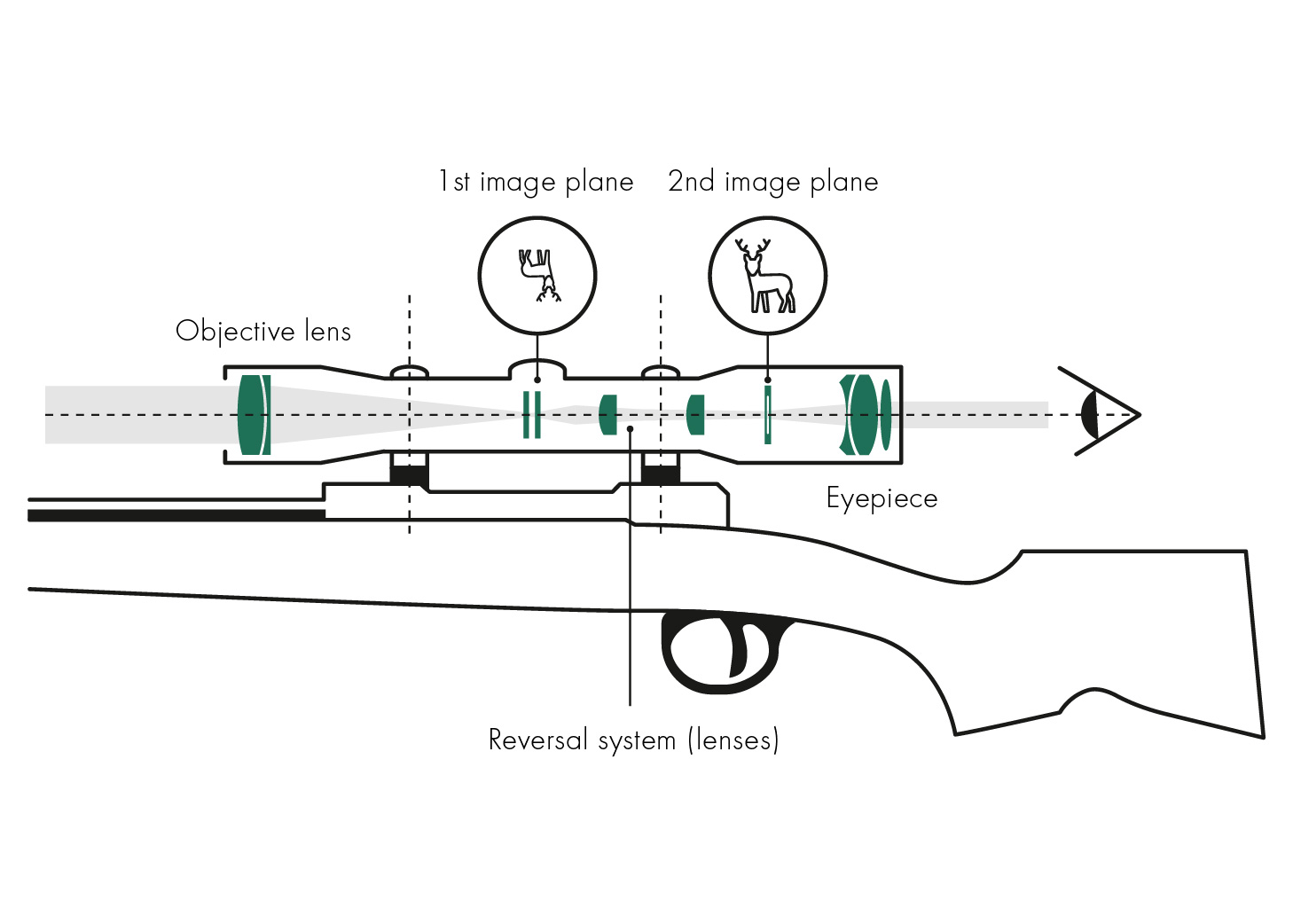

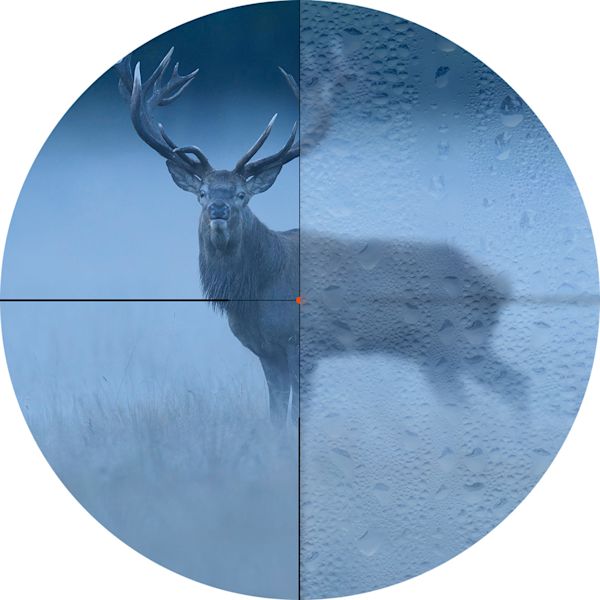
TARGET OPTICS – BASIC PRINCIPLES
RETICLES
The reticle refers to a wide range of target aids in rifle scopes. They allow the eye to see both the target and target aid clearly.
Reticles come in different forms. However, they mostly consist of a crosshair, line, dot, or circle, or any combination of these.
Reticles are available in two designs: non-illuminated or illuminated.

TARGET OPTICS – BASIC PRINCIPLES
ILLUMINATED RETICLE
Reticles can incorporate an illumination system for lighting up different areas of the target. Rifle scopes with illumination units provide a greater contrast for game, thereby ensuring more certainty when taking aim. They are tailored to hunting needs: day/night switch, adjustment for light intensity, automatic on/off, tilt sensor, durability, luminosity, etc. At SWAROVSKI OPTIK, the name of the rifle scope tells you whether or not the reticle is illuminated (the lowercase “i” stands for “illuminated”). With a few exceptions for specific markets, SWAROVSKI OPTIK produces only rifle scopes with illuminated reticles.
RETICLE ADJUSTMENT
When aiming with a rifle scope, two different points need to be lined up: the sighting point and the aiming point on the target. The reticle must not be displaced by external forces such as recoil, otherwise the impact point will vary uncontrollably. However, in order to sight in the firearm, it must be possible to move and adjust the reticle inside the rifle scope.
The aiming point is the point on the target object at which you are aiming. When using open sights, both back and front sights must be lined up with the aiming point for an accurate shot. With a rifle scope, the back and front sights are, as it were, brought together into a single point on the reticle, the sighting point.
The click settings are used to adjust the reticle in the turrets on the rifle scope. The relevant direction is indicated by the label on the turrets. Each click changes the impact point at 100 m (109 yds), e.g. by 1 cm (0.39 in).
The displacements of the reticle this produces in the reversal system are in the thousandths of a millimeter.
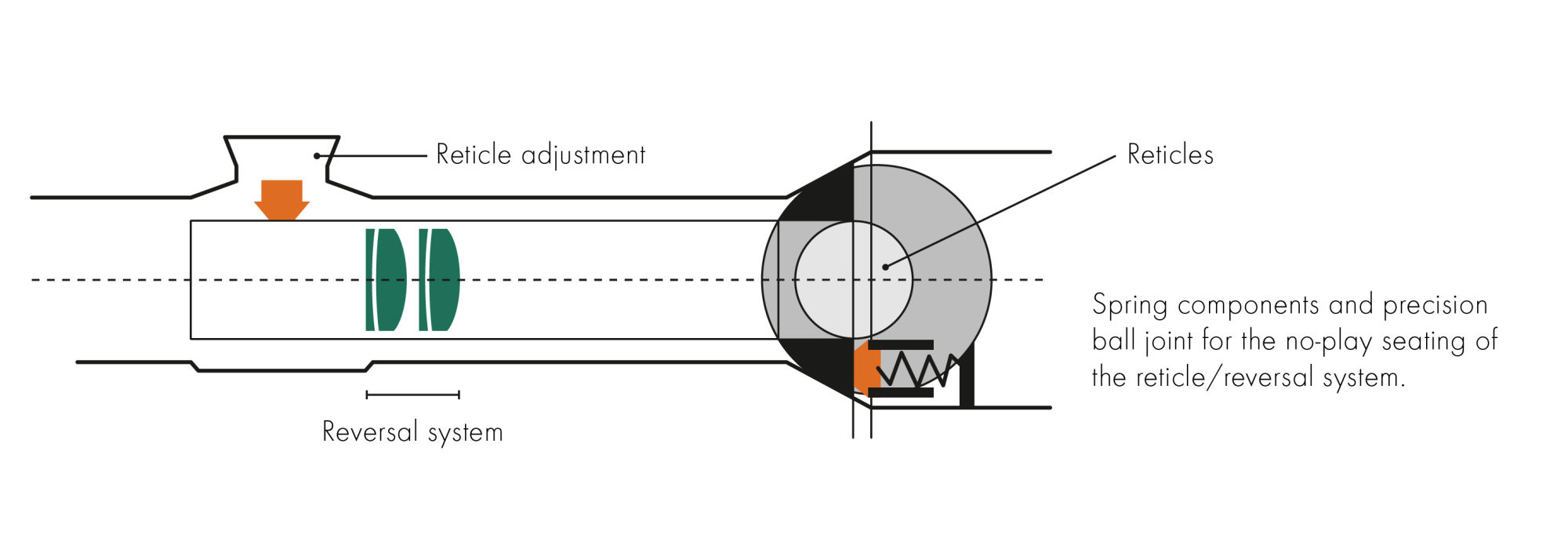
BALLISTIC TURRET
Almost all rifle scope manufacturers now offer an optional ballistic turret . This allows rapid adjustment of the sight line. In practice, this means it helps you stay on target despite a longer shooting distance.
For example, if the rifle scope is sighted in at 150 m (164 yds) (i.e. the target point and point of impact are identical), rotating the turret allows you to quickly and easily adjust the impact point at 200, 250, or 300 m (219, 274, or 328 yds). The turret of course needs to be adjusted individually to the firearm and ammunition combination.
If you have calculated the ballistics data correctly and are aware of the consequences of a distance shot including all potential external influencing factors, then it is as simple as it sounds: measure distance, adjust ballistics turret, stay on target – for an accurate shot.
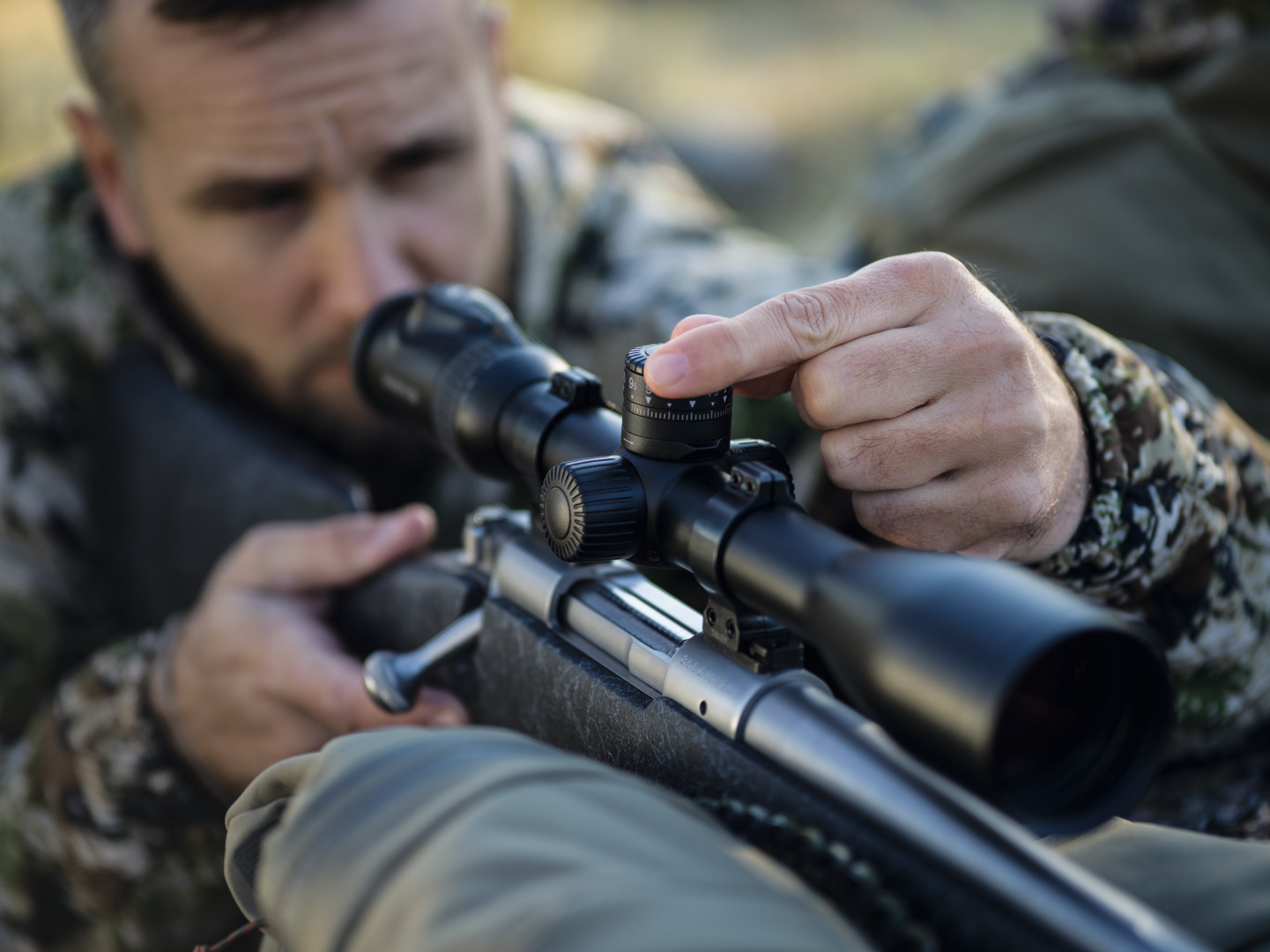
PARALLAX
The parallax is the error that occurs when shooting without looking through the center of the rifle scope. It results in a displacement between the target and the reticle. The parallax only occurs when the eye is positioned outside of the optical axis, e.g. when looking into the eyepiece at an oblique angle.
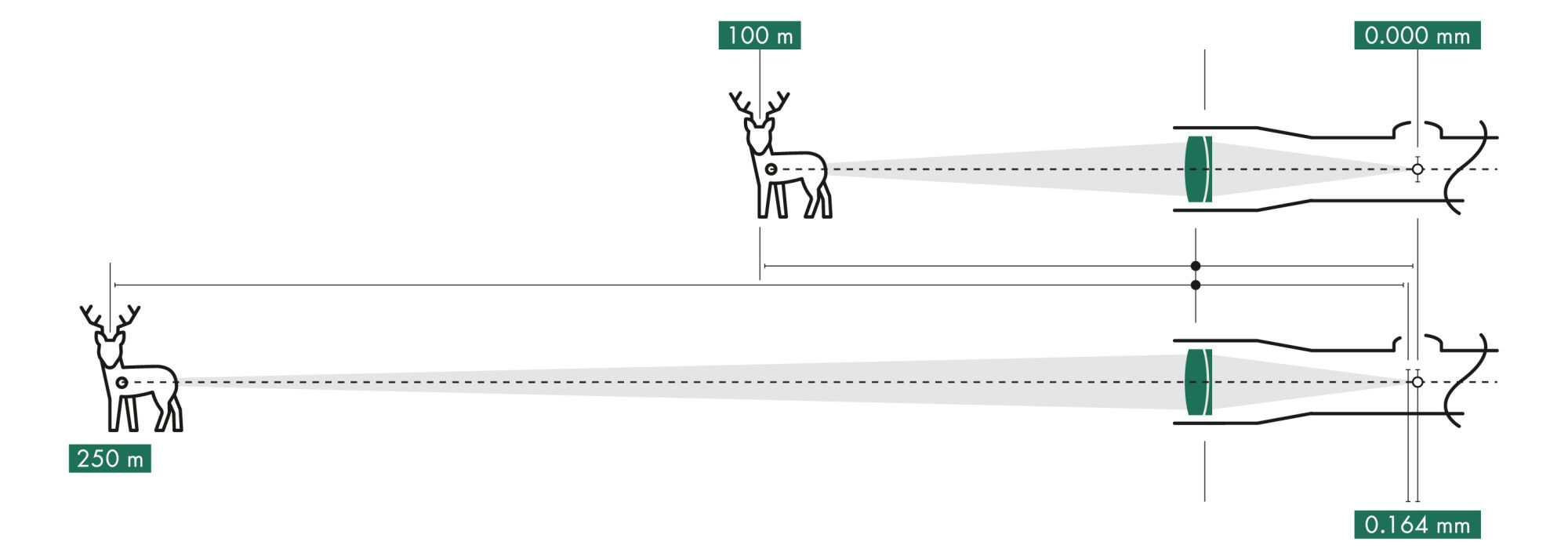
MORE ARTICLES ON THE TOPIC OF LONG-RANGE OPTICS
Would you like more information and some useful tips on long-range optics? Read our section Long-range optics explained and immerse yourself in the fascinating world of binoculars, spotting scopes, and rifle scopes.
